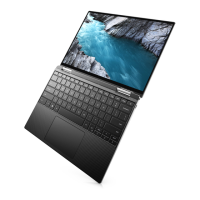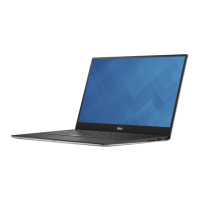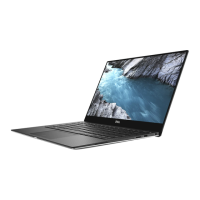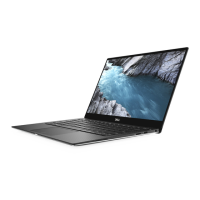What to do if my Dell XPS 13 9315 2-in-1 has a Power rail failure?
- RRalph ColemanSep 10, 2025
Replace the system board.

What to do if my Dell XPS 13 9315 2-in-1 has a Power rail failure?
Replace the system board.
What to do if my Dell Laptop has no memory/RAM detected?
First, confirm that the memory module is installed properly. If the problem persists, replace the memory module.
How to fix Memory/RAM failure on my Dell XPS 13 9315 2-in-1 Laptop?
To fix this, reset and swap memory modules among the slots. If the issue continues, replace the memory module.
What to do if my Dell XPS 13 9315 2-in-1 has invalid memory installed?
Try resetting and swapping the memory modules among the slots. If the problem continues, you may need to replace the memory module.
How to fix system board failure (included BIOS corruption or ROM error) on Dell XPS 13 9315 2-in-1?
Try flashing the latest BIOS version. If the problem persists, replace the system board.
What to do if my Dell Laptop has BIOS Recovery image not found?
Try flashing the latest BIOS version. If the problem persists, replace the system board.
What to do if my Dell XPS 13 9315 2-in-1 Laptop has Timeout waiting on ME to reply to HECI message?
Replace the system board.
What to do if my Dell XPS 13 9315 2-in-1 has LCD failure (EC detection of power rail failure)?
Replace the system board.
What to do if my Dell Laptop has a PCI or Video card/chip failure?
Replace the system board.
How to fix LCD failure (SBIOS message) on Dell XPS 13 9315 2-in-1?
Replace the LCD module.
| Processor | 12th Gen Intel Core i5-1230U or i7-1250U |
|---|---|
| Graphics | Intel Iris Xe Graphics |
| Display | 13.0-inch 3K (2880 x 1920) Touch |
| RAM | 8GB or 16GB LPDDR4x |
| Storage | 256GB, 512GB, or 1TB PCIe NVMe SSD |
| Operating System | Windows 11 Home |
| Battery | 49.5 Whr (4-Cell) |
| Ports | 2 x Thunderbolt 4, 1 x microSD card reader, 1 x Headset (headphone and microphone combo) |
| Wireless | Wi-Fi 6E (802.11ax), Bluetooth 5.2 |
| Audio | Stereo speakers with Waves MaxxAudio Pro |
| Color | Platinum |
Explanation of ESD damage types and prevention methods.
Components and usage of the ESD kit for static protection.
Summary of recommended ESD protection measures.
Security features including TPM, BIOS passwords, and data wipe.
Configuration for system and admin passwords, complexity, and lockout.
Settings for CPU cores, speedstep, C-states, and turbo boost.
Guide to create and set up system and administrator passwords.
Steps to modify or remove existing system and setup passwords.
Information on how to clear BIOS and system passwords.
General information about updating the system's BIOS.
Instructions to update BIOS using the Windows operating system.
Steps to update BIOS using a bootable USB drive within Windows.
Guide to update BIOS using the F12 boot menu and a USB drive.
Safety guidelines and procedures for handling swollen Lithium-ion batteries.
Using SupportAssist OS Recovery when the system fails to boot.
Procedure to reset the RTC to recover from POST/Boot/Power issues.











